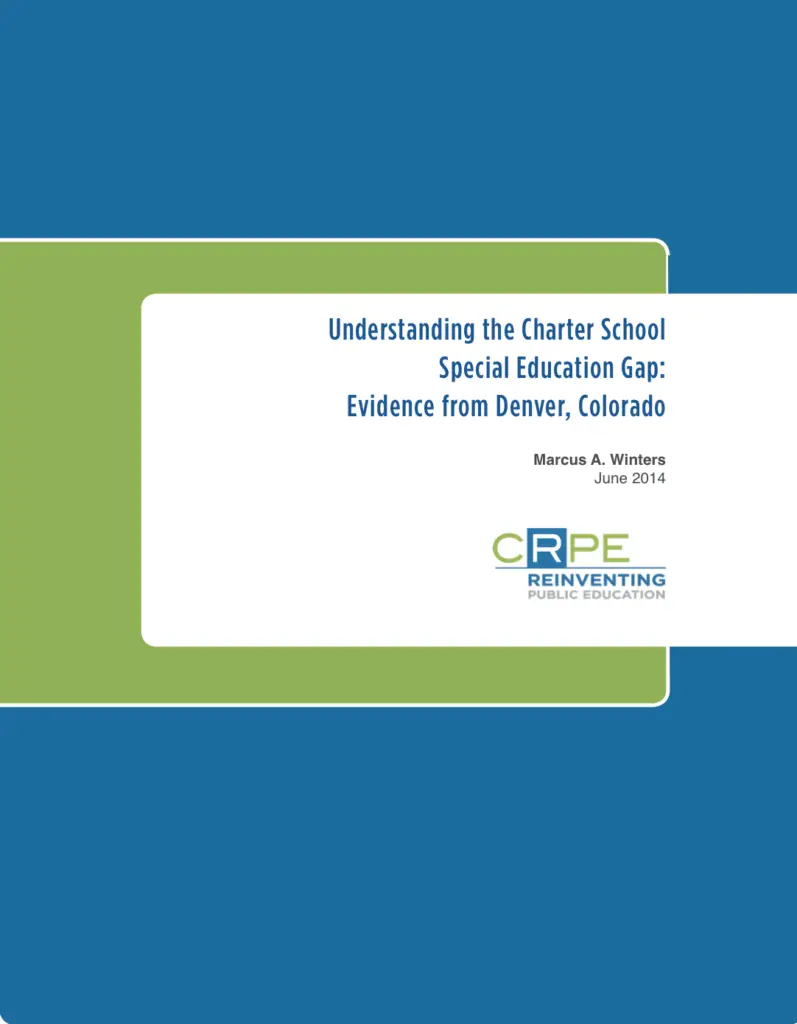Read the Executive Summary
Read Dr. Winters’ related article in Educational Researcher, May 2015.
CRPE commissioned Dr. Marcus Winters to analyze the factors driving the special education gap between Denver’s charter and traditional public elementary and middle schools.
Using student-level data, Winters shows that Denver’s special education enrollment gap starts at roughly 2 percentage points in kindergarten and is more than triple that in eighth grade. However, it doesn’t appear to be caused by charter schools pushing students out. Instead, the gap is mostly due to student preferences for different types of schools, how schools classify and declassify students, and the movement of students without disabilities across sectors.
Among the key findings:
- Students with special needs are less likely to apply to charter schools in kindergarten and sixth grade: In the gateway grades, when students are most likely to choose schools, those with disabilities are significantly less likely to apply to charter schools than are students without disabilities. This difference explains the majority of the gap in middle school grades, particularly for certain categories of disability.
- The gap grows significantly between kindergarten and fifth grade: 46% of the growth occurs because charter schools are less likely to classify students as special education, and more likely to declassify them; 54% is due to the number of new general education students enrolling in charter schools, not from the number of students with special needs going down.
- Students with special needs in charter schools change schools less often than those in traditional public schools: Five years after enrolling in kindergarten, about 65 percent of charter students with special needs are still in their original schools, while only 37 percent of traditional public school students with special needs are still in their original schools.
Many of the findings from Denver are consistent with CRPE’s earlier study of New York City (also authored by Winters), suggesting there may be common features driving this gap in school systems nationwide. In both cities, charter elementary schools are much less likely than the traditional public schools to identify students as disabled, and students with identified disabilities are much less likely to apply to charter schools.
View the live stream of the report release event here




